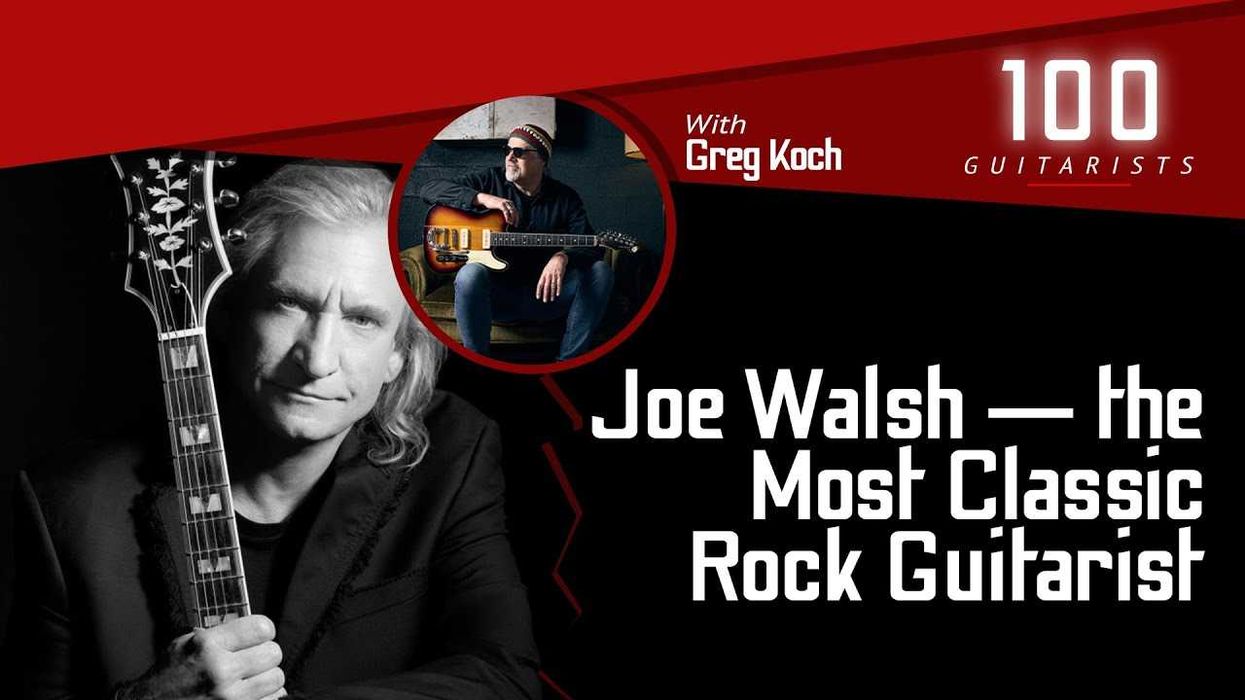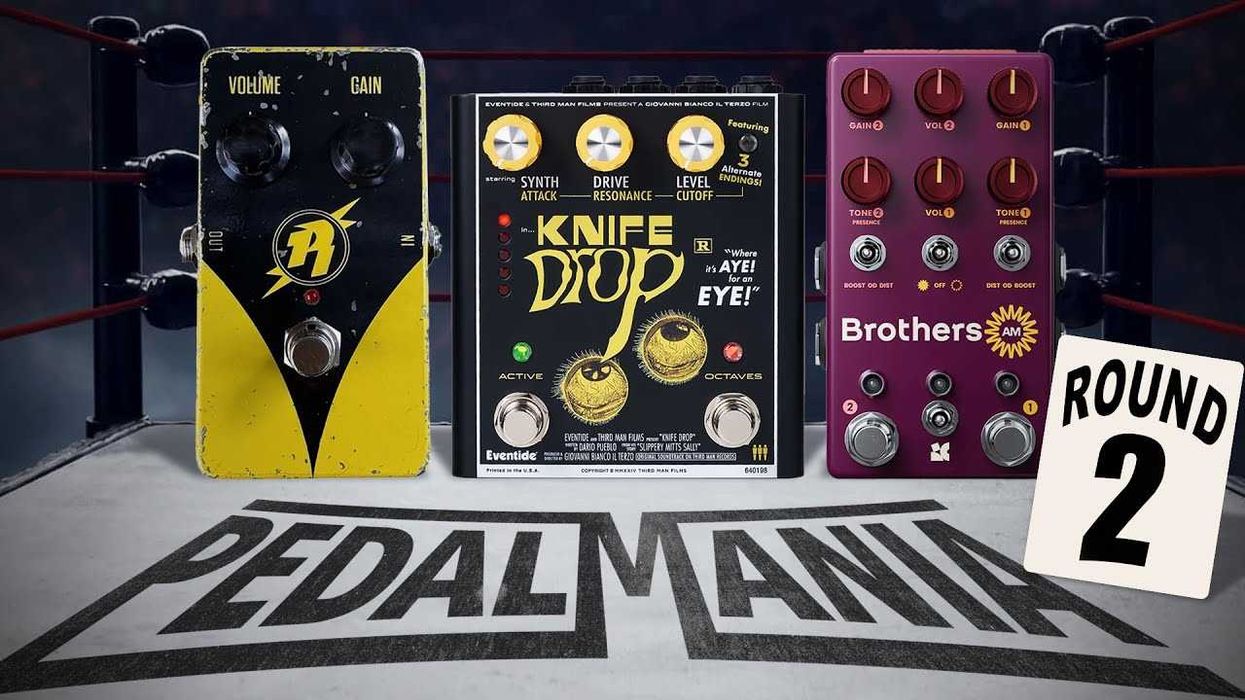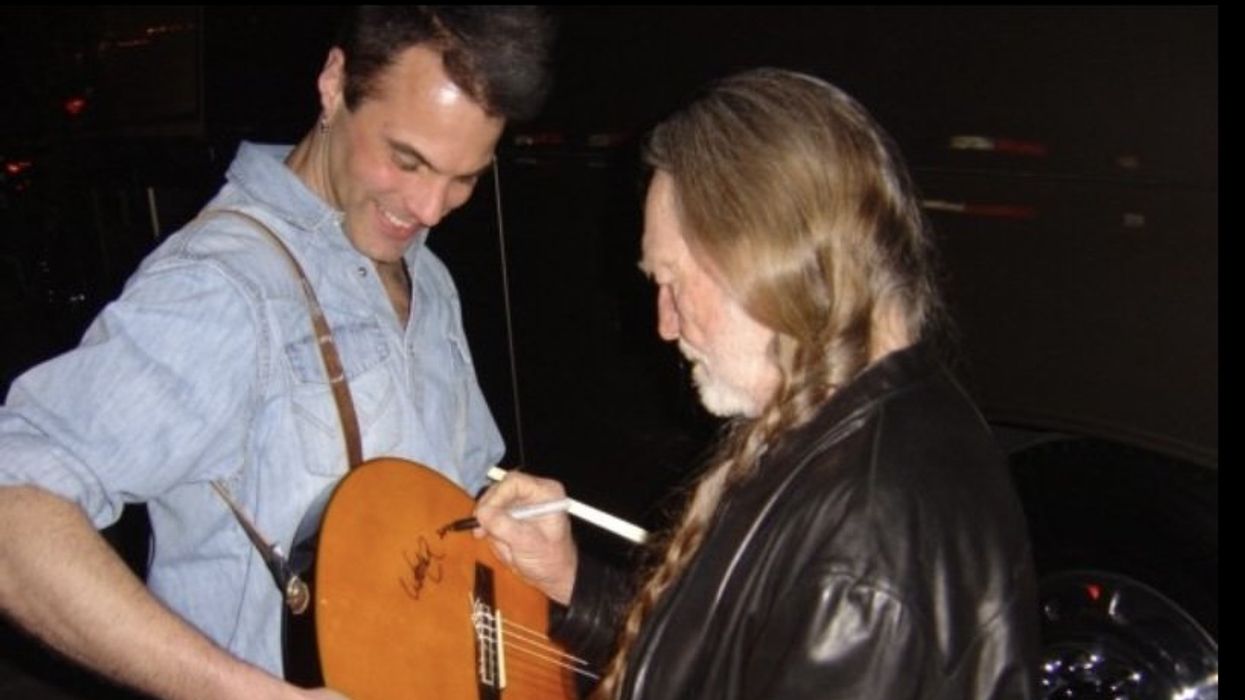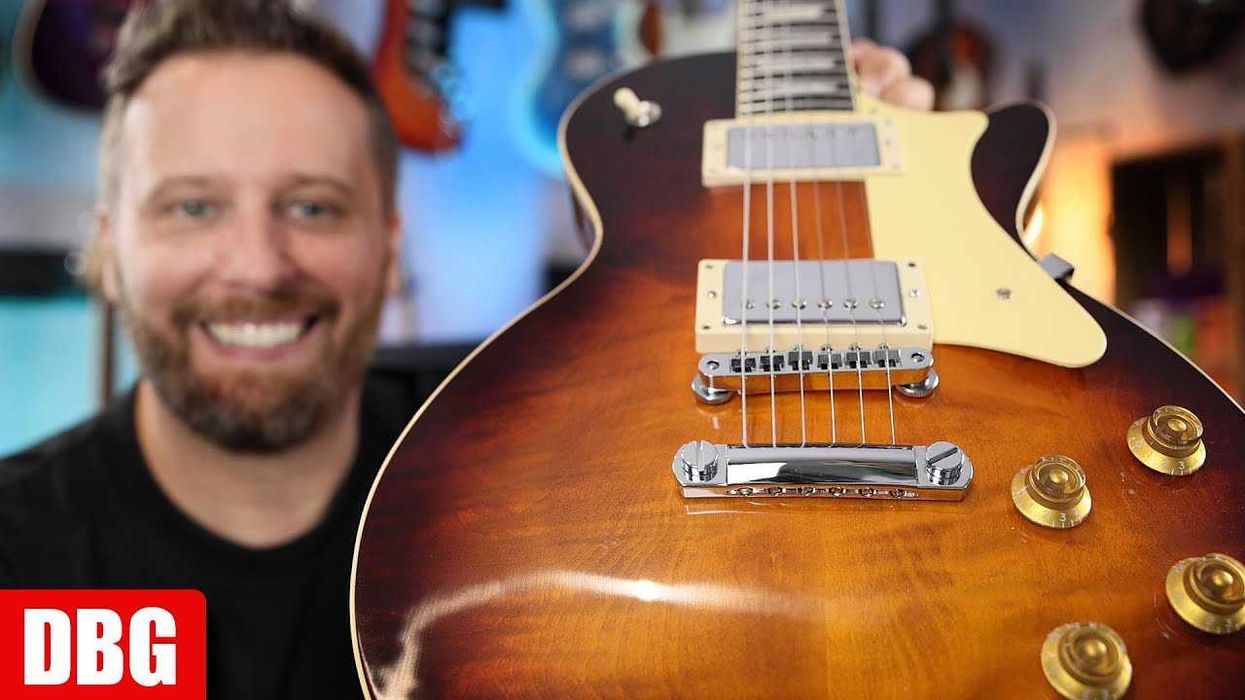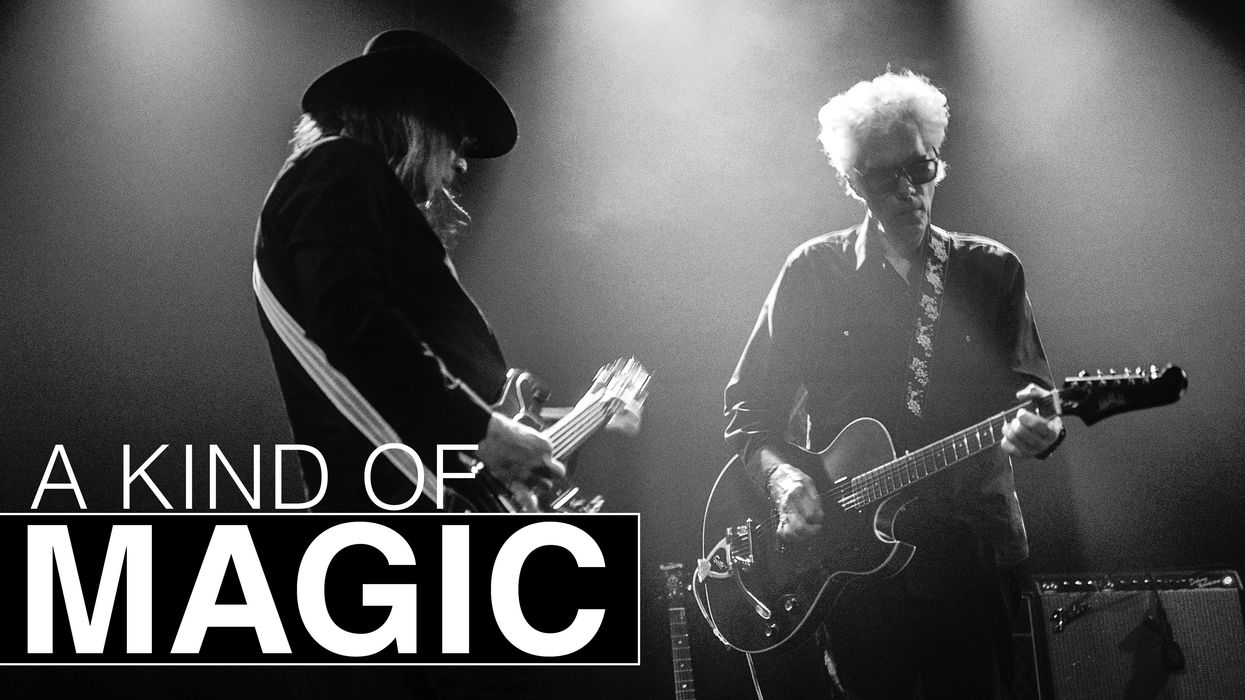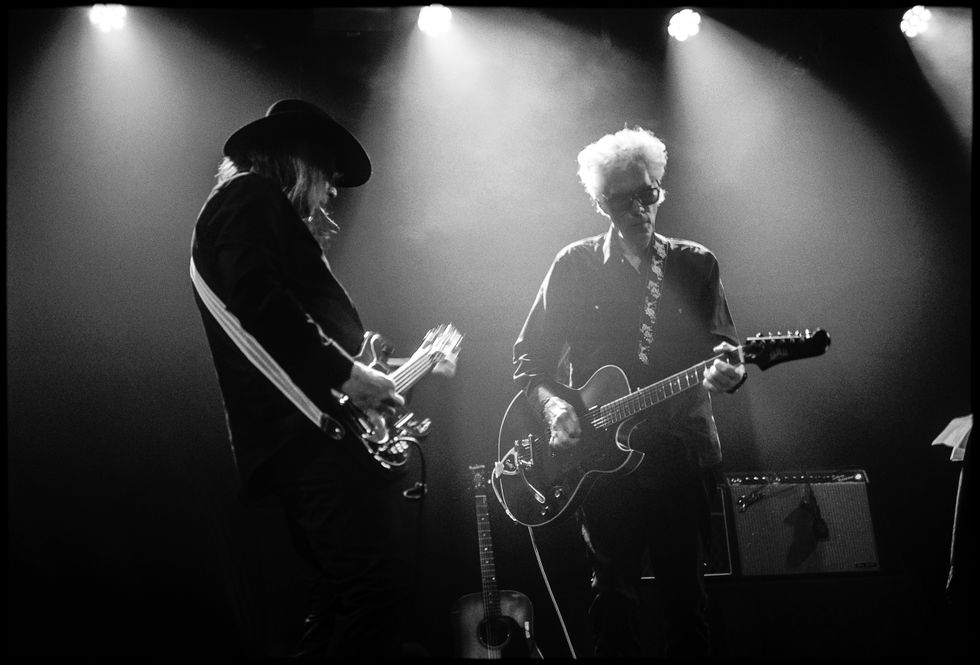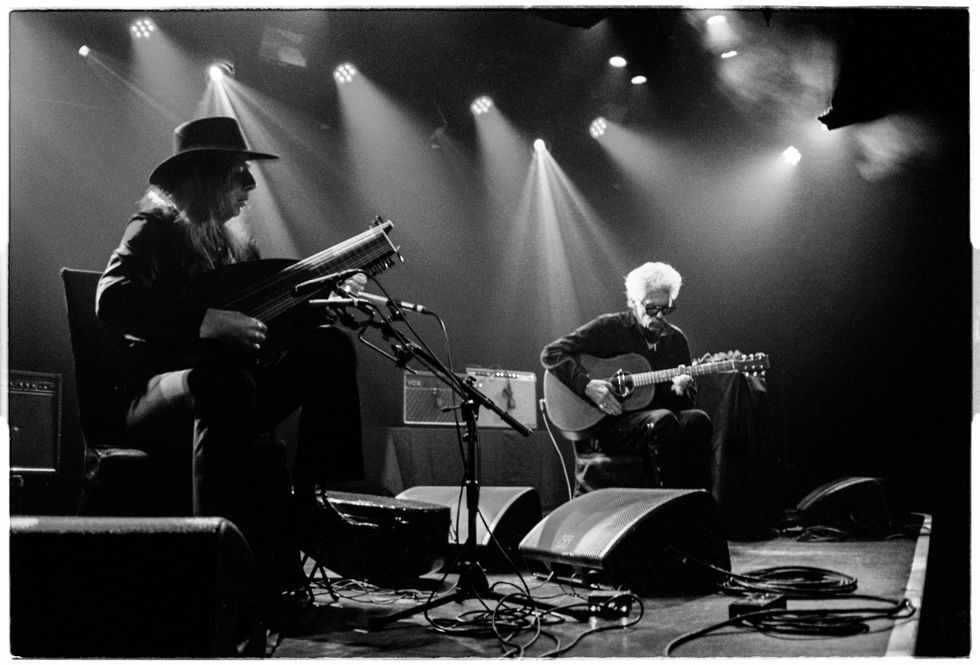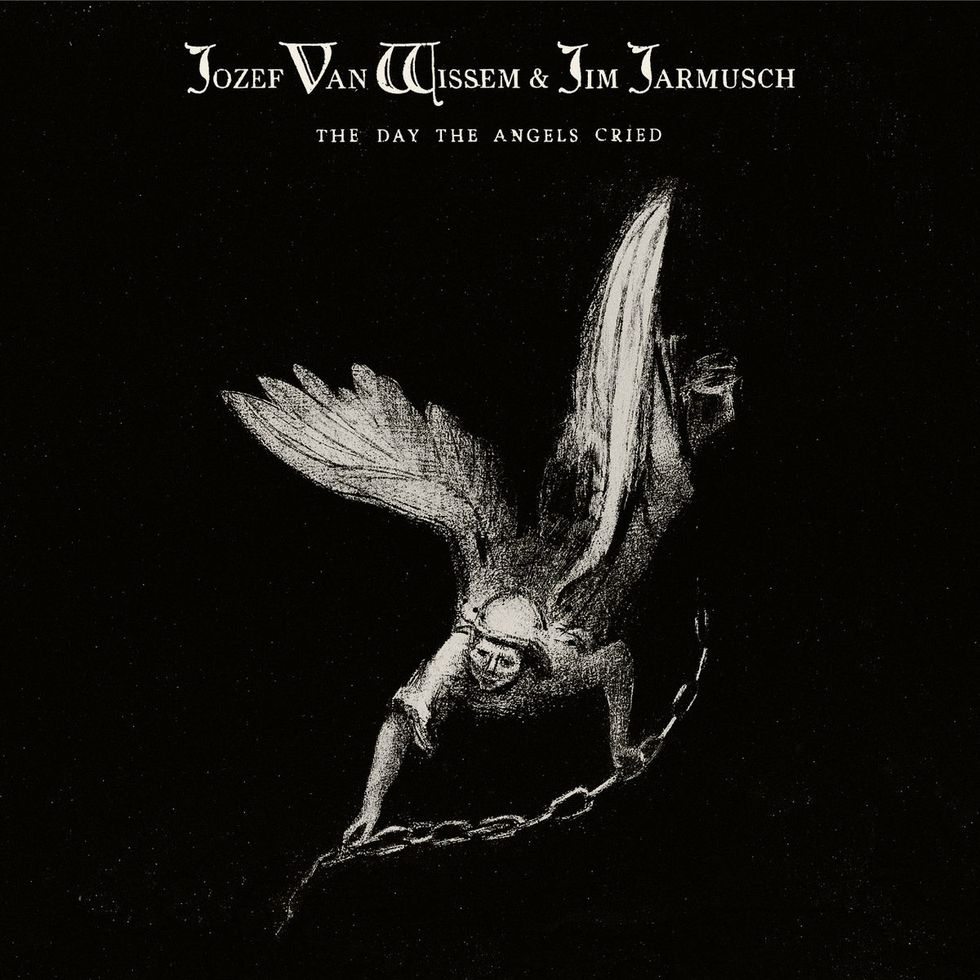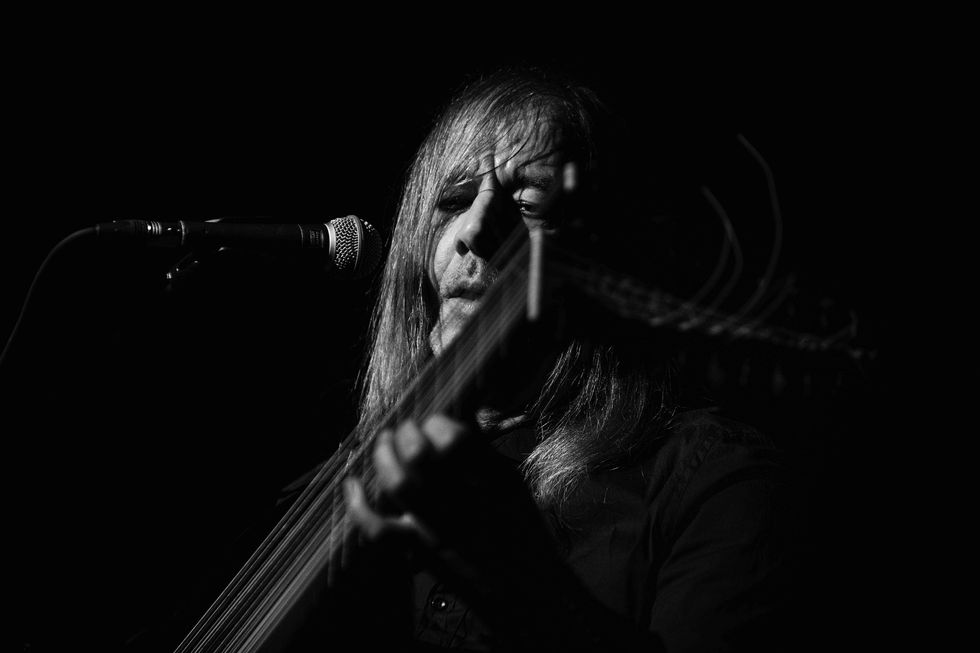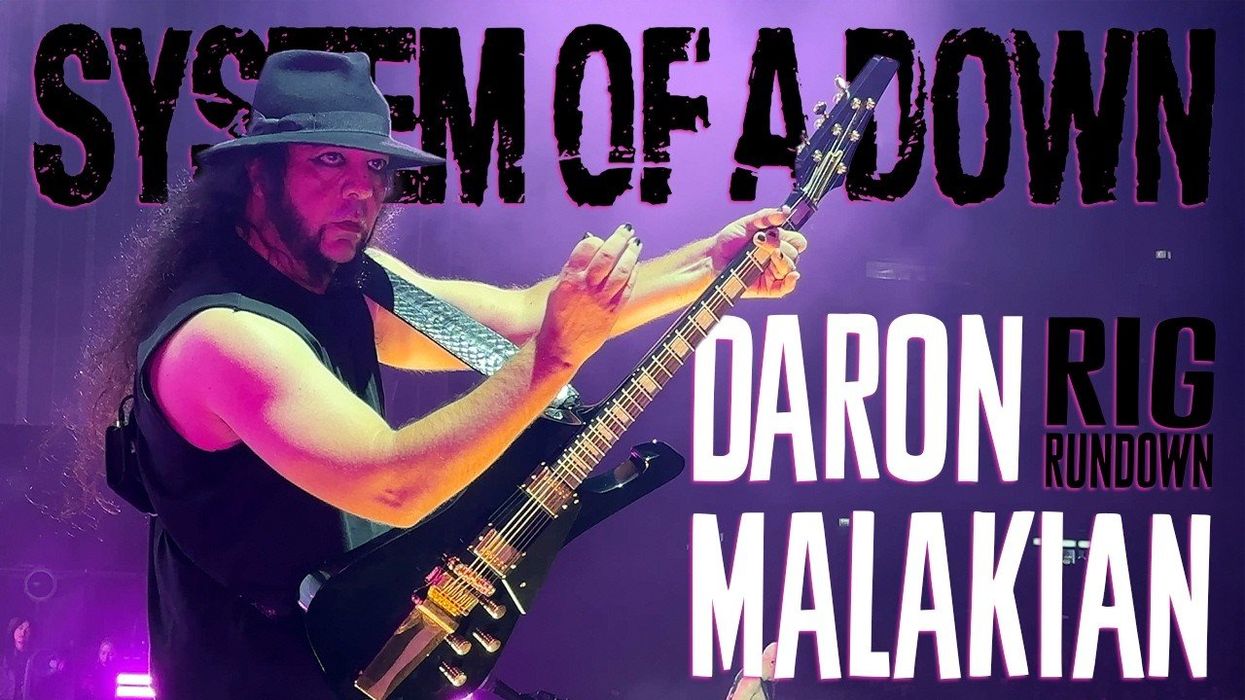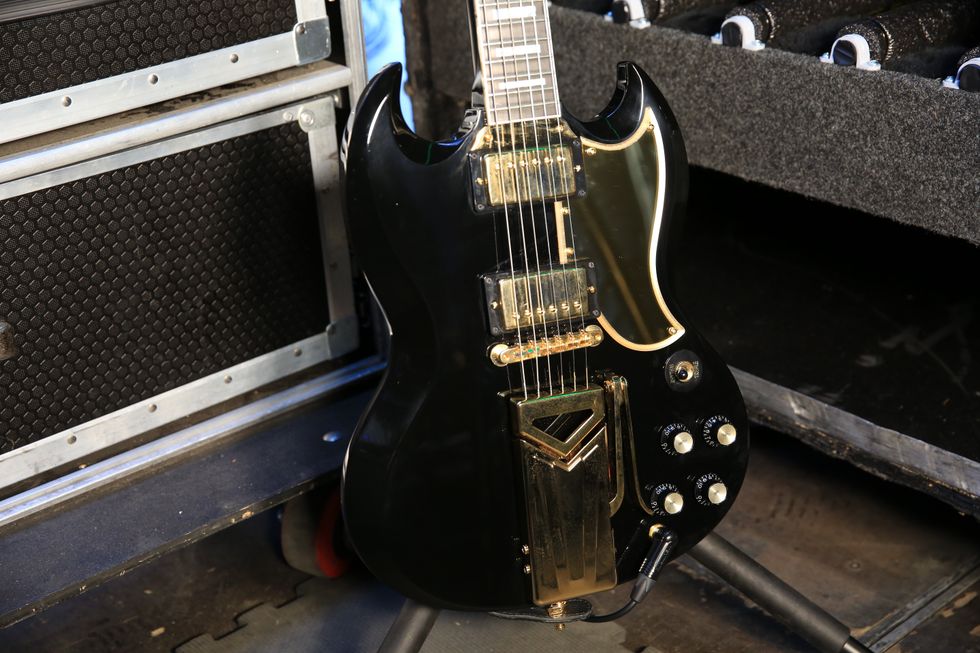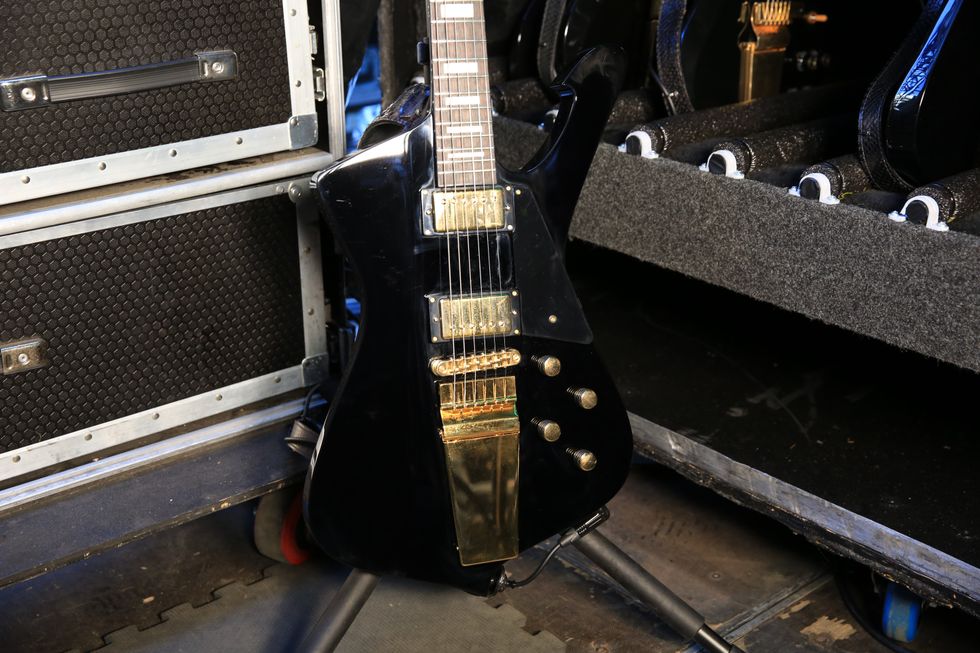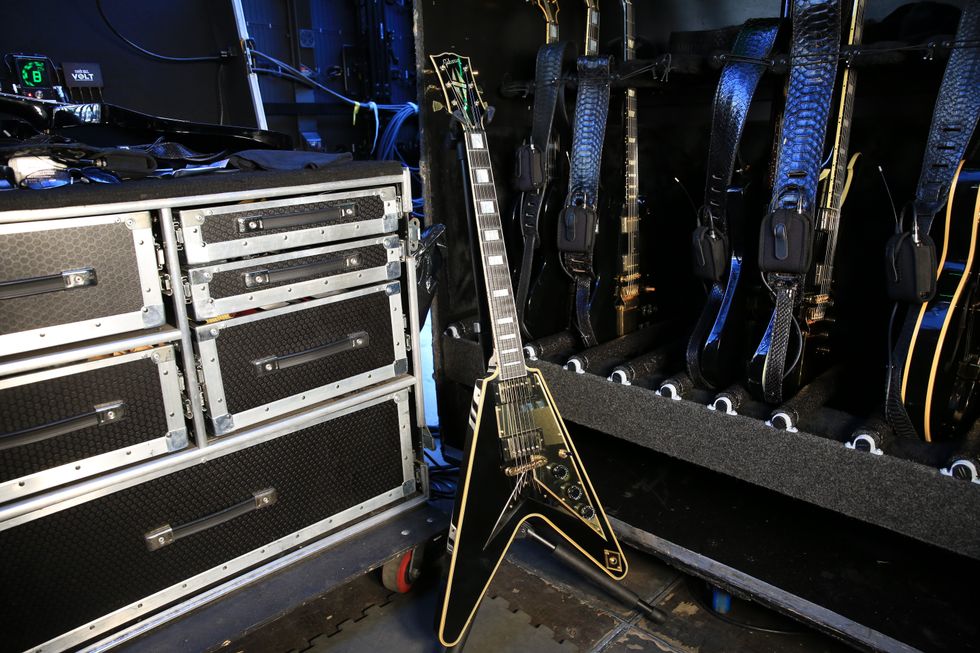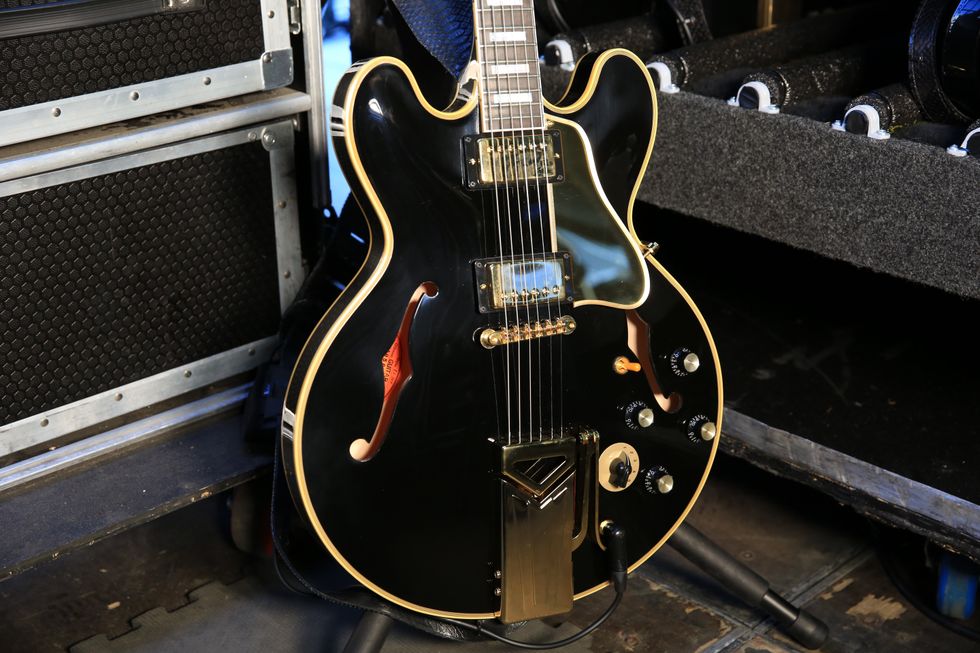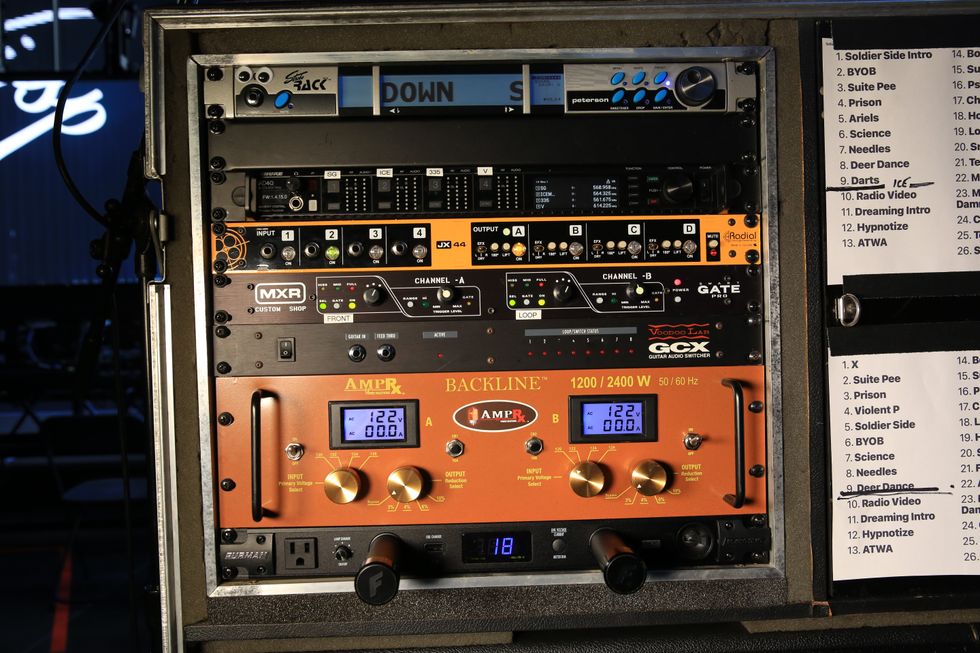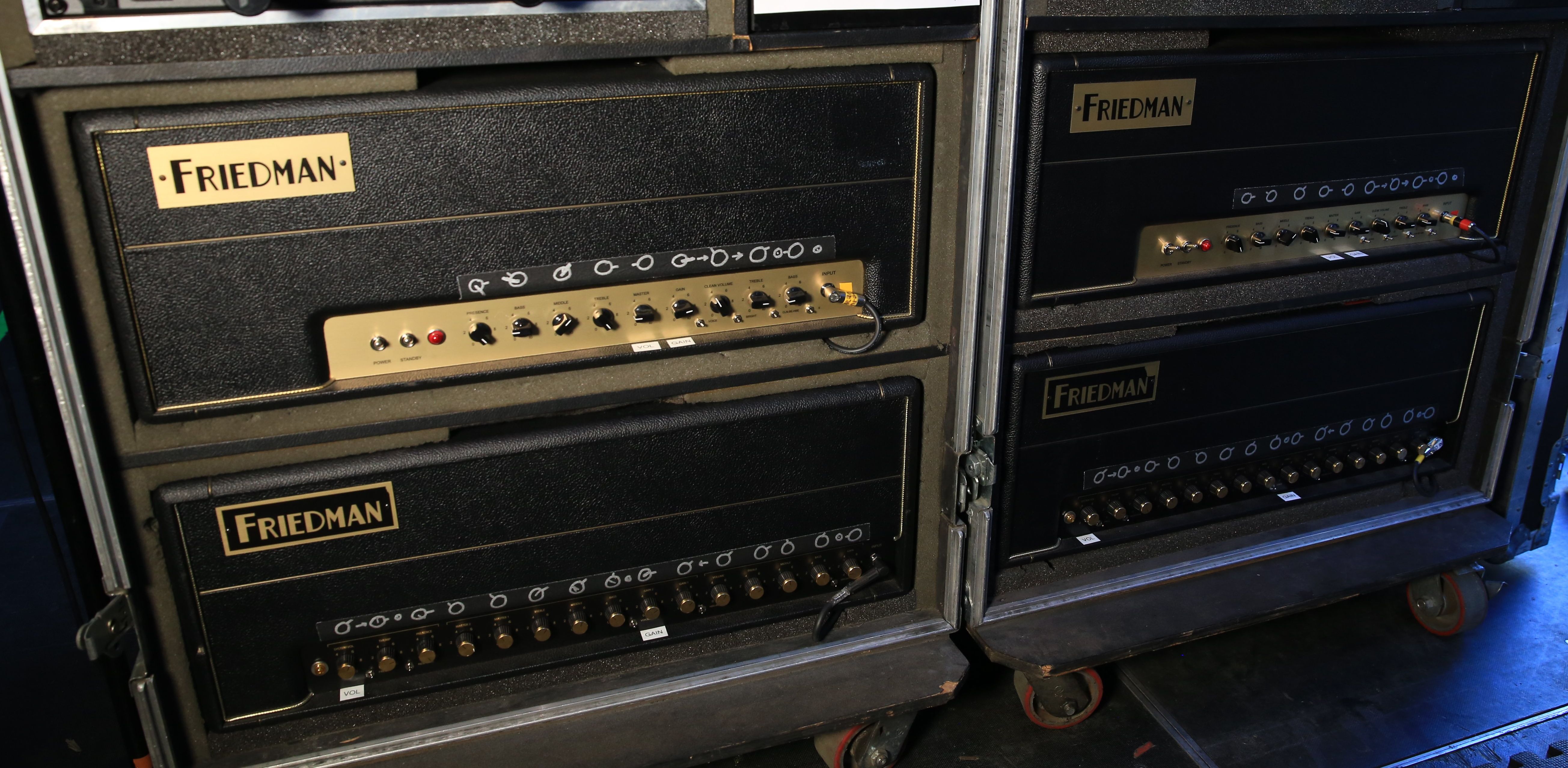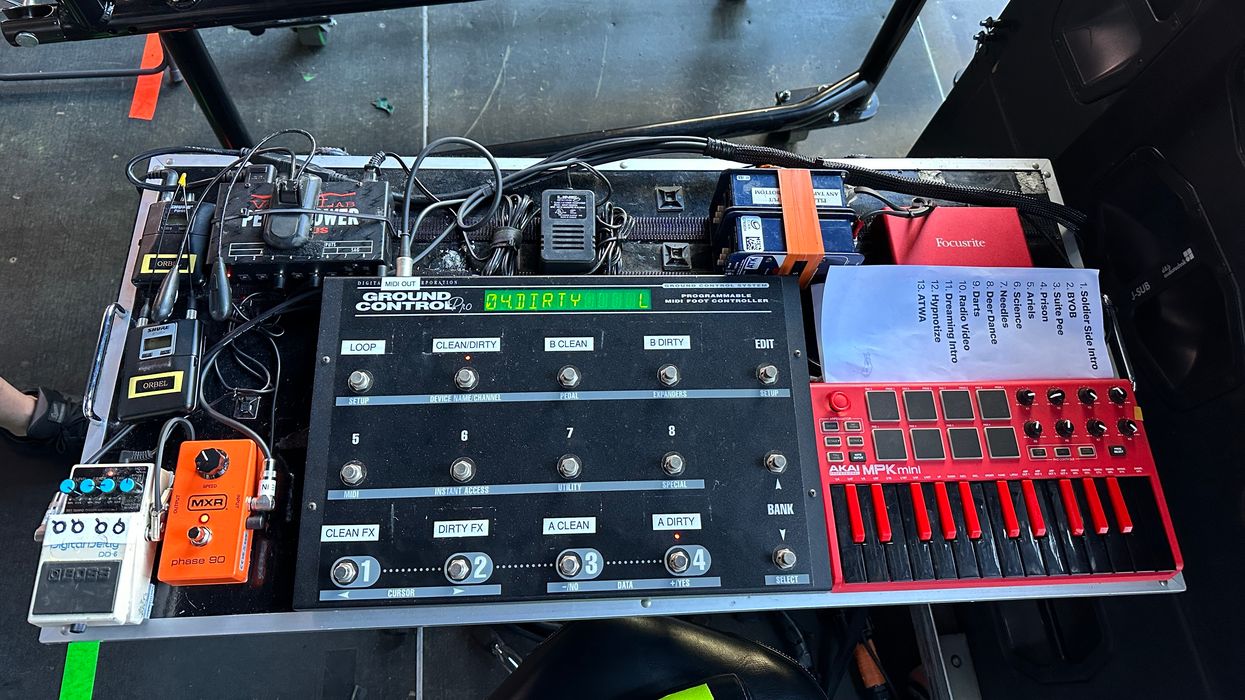“When you’re young, you’re attracted to all these [guitar] ideas—do this, do that,” says Eric Johnson. “You’re like a sponge. If you get yourself out of the way, get rid of the ego, and stay open, you remain a student your whole life. But at the same time, you get to the point where you’re like, ‘There’s only so much time, and I don’t need to learn this and that.’ There are things that Joe [Satriani] or Steve [Vai] do that I’ll never be able to do.”
Some guitarists would find that notion depressing—of finally extinguishing the naive youthful fire to master every technique on their instrument. (It’s probably easier to find peace when you’re one of the world’s most revered players, with platinum sales and Grammys on your résumé.) But when Johnson looks at Satriani and Vai, his fellow virtuosos on the 2024 G3 reunion tour, the idea of “letting go” puts a smile on his face.
“Although we stay open, we define some of our journey,” says Johnson. “We can’t be everything to everybody. Then you start appreciating what someone else is doing even more.”
That sense of refinement is crucial to the story of G3, the triple-guitar tour conceived by Satriani and launched alongside Johnson and Vai in 1996. Over the years, the event has morphed to incorporate players from just about every style: from blues-rock (Kenny Wayne Shepherd) to prog-metal (Dream Theater’s John Petrucci) to hard rock (Uli Jon Roth) to the eerie soundscapes of King Crimson’s Robert Fripp. Far from a rote shred-fest, it’s a celebration of the electric guitar’s unlimited possibilities. And Satriani’s been thinking a lot about that idea following the G3 reunion tour, which ran for 13 dates last January, spawned a new concert album (Reunion Live), and will eventually birth a documentary helmed by his son ZZ.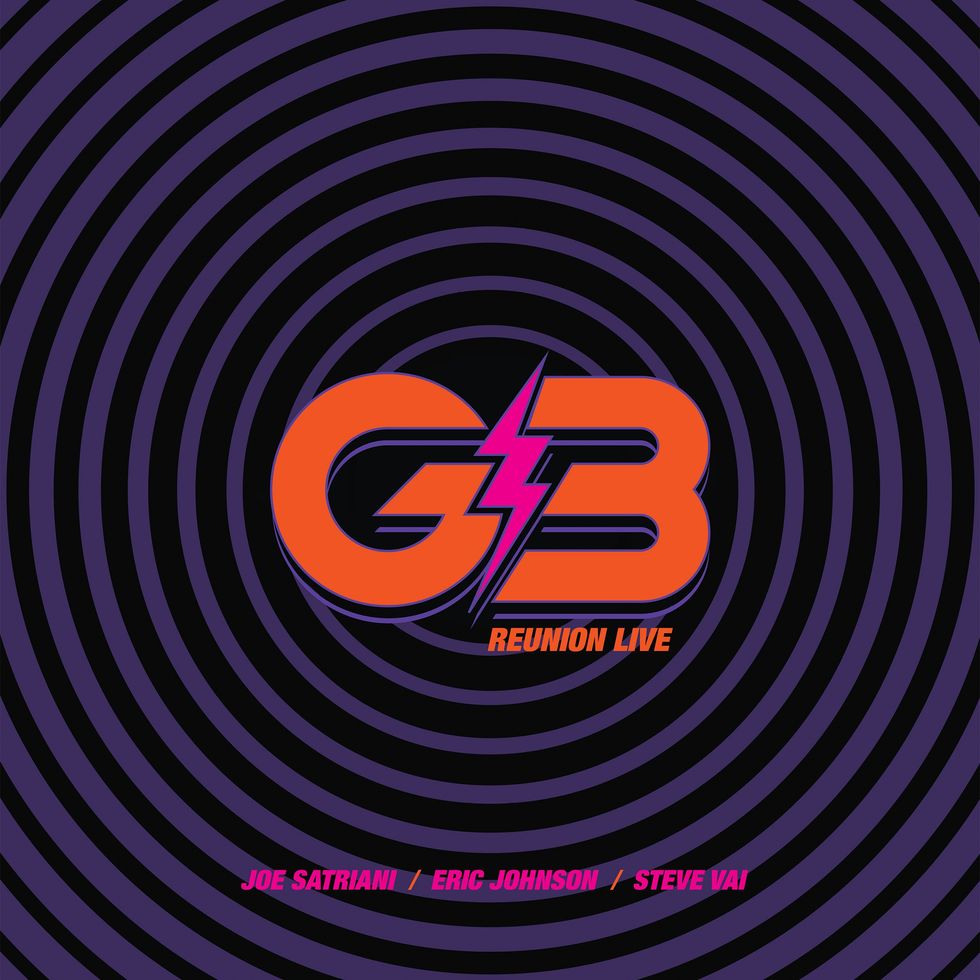
Recorded live at the Orpheum Theatre in Los Angeles, Reunion Live documents the culmination of a 13-date tour that brought the trio together for the first time since the original tour in 1996.
“He had an interesting idea for a film,” Satriani says. “Our first G3 show happened the week he turned four, and we decided we were always going to take him with us. He wanted to do a film not only about that and about G3 but also his whole point of view growing up with a very strange father and this community of guitar players. He wanted to know their perspective on guitar playing and music and this life he’s been a part of.”
The younger Satriani grew even more ambitious, proposing that the OG G3s [OG3s?] get together for another tour. “ZZ wanted to see what it was really like, after decades of traveling with me and the different bands, to get onstage and play,” Satch says. “It all sort of happened in those last two shows at the Orpheum in Los Angeles. ZZ came on and played a song, and that sort of brought the film full-circle—from the four-year-old to the 32-year-old playing onstage with his dad. The [as-yet-unreleased] film has really developed into this epic story about guitar players. Eric and Steve have been so generous with their time, letting ZZ interview them about music, guitar, and what it means to them. But that’s really how the whole thing got started this time around.”
“30 years later, you can really see more of the dynamic difference in our go-to notes and riffs. Joe is more Joe now; Eric is more Eric now; and I’m more me now.”—Steve Vai
Reunion Live unfolds like the actual G3 shows, with miniature heavy-hitter sets from each artist (you get Vai’s “For the Love of God,” Satriani’s “Surfing With the Alien,” Johnson’s “Desert Rose”), followed by a trio of generous, triple-guitar cover-song jams—in this case, ripping versions of Robert Johnson’s blues staple “Crossroads,” Steppenwolf’s open-road proto-metal anthem “Born to Be Wild,” and Jimi Hendrix’s hard-psych powerhouse “Spanish Castle Magic.” The latter, fronted by Johnson, is the album’s centerpiece: 11-plus minutes of instrumental fireworks that perfectly showcase each player’s distinct flavor. Toward the end, the groove lays back into a quiet, funky simmer—the perfect platform for an onslaught of tasteful flourishes and ungodly shredding.
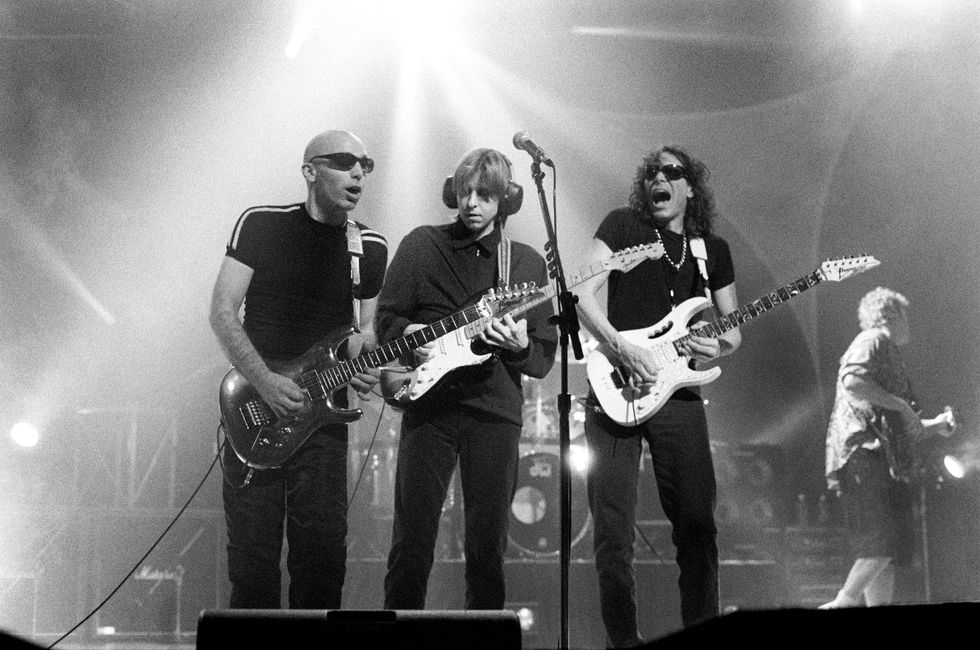
Back in 1996, the trio barnstormed across the country and laid waste to guitar nerds everywhere with a scorching version of Zappa’s “My Guitar Wants to Kill Your Mama.”
Photo by Ebet Roberts
“The thing I liked about that [choice] was that it’s very common to play a Hendrix song in a jam, but most people play the usual suspects,” says Vai. “Eric’s Hendrix catalog runs deep, and he’s played ‘Spanish Castle Magic’ on multiple occasions, and I’ve played it in the past. When it came up on this G3, I was very excited because it’s a great song to play. It’s just got a great feel to it, and the groove for soloing is very open. I was very happy to see that.”
“I hate the word ‘competition.’ But if we didn’t want to challenge each other, we wouldn’t have agreed to do the tour.”—Joe Satriani
“I remember doing so many cover songs over the past few decades, and every once in a while you come up with an all-purpose song that anyone, from any walk of life, can come join you on,” says Satriani. “And then you have these other songs that really shine a light on an individual’s foundation as a player and some of their early inspirations. I know that all three of us were so into Jimi Hendrix. I love doing that song. I’d do any Hendrix song. Eric and I have a lot of experience going out with the Experience Hendrix [tribute] tour. He figured into our early musical lives—even before I played guitar, I was a big Hendrix fan.”
“Crossroads” is also fascinating on many levels. Sure, it’s hard for any good rock band to screw this one up, and it could be the most obvious pick for any guitar jam, but the song’s simple blues structure also allows for a delicious whiplash, magnifying the vast differences in tonality and note choice between each guitarist.
“At first, when ‘Crossroads’ came in, I was like, ‘OK, it’s this classic rock song.’ But once you’re onstage and playing it, the riff is so great,” says Vai. “It’s robust. When you hear each guy solo, you can hear how we’ve changed through the years. Not just us—any guitar player who sticks with their craft goes through various evolutions into different directions. Some can stagnate, but you’re usually inching toward something different. Most of the time physicality is involved in that. When I hear ‘Spanish Castle Magic’ or ‘Crossroads,’ the stuff on this jam, my ears are listening to 30 years ago, in a sense, when we would trade. Today, 30 years later, you can really see more of the dynamic difference in our go-to notes and riffs. Joe is more Joe now; Eric is more Eric now; and I’m more me now. I’ve abandoned trying to sound conventional in any way.” The more they sound like the definitive versions of themselves, as on this G3 tour, the more in tune with each other they seem to be.Joe Satrian's Gear

The G3 mastermind would never use the word “competition,” but feels like his fellow G3ers wouldn’t show up if they didn’t want to be challenged.
Photo by Jon Luini
Guitars
- Various Ibanez JS Models (tuned to Eb standard)
Amps
- Marshall JVM410HJS
- Two Marshall 1960B 4x12 cabinets
Effects
- Vox Big Bad Wah
- Boss OC-3
- DigiTech SubNUp
- MXR EVH Flanger
- DigiTech Whammy
- Boss DD-8 (in effects loop)
- Voodoo Lab Pedal Power
Strings & Picks
- D’Addario XL110 (.010–.046)
- D’Addario Satch Grip Picks
“I would listen to Joe and Steve, and I would marvel at the guitar playing and the consistency of how great it was, but for me, it was [also] an opportunity to look beyond [it],” says Johnson. “It was a bit of an epiphany doing this tour because I tuned into the energy they had, the songs they were writing, the sounds they were getting, the shows they were doing. It even made the guitar playing more interesting because there was another dynamic I was tuning in to more. Not that it wasn’t always important, but as you get older, you try to see the whole hemisphere and what that means to the audience. It’s a win-win because it doesn’t take anything away from the guitar—it makes it more interesting to have encased in that bigger thing. I noticed that more this time, which made me feel good.”
“We can’t be everything to everybody.”—Eric Johnson
The G3 tour, and particularly the encore jams, are fascinating at the conceptual level: taking players largely renowned as soloists, and forcing them to share stages and trade licks—working to compliment each other’s playing instead of simply flexing their muscles and drawing on some primal competitive drive.
“The ego is the definition of competition,” says Vai. “Its perspective is, ‘How do I stack up? How do I rise above? How do I sell more, make more, have more, be more than anyone else?’ This is nothing personal to me—this is in the collective of humanity. Ego can wreak havoc in your life and cause a lot of dysfunction and stress. You don’t know it because you’re unconscious of the way the ego can be competitive. More in my earlier days, in the background, there was a perspective of competitiveness. This doesn’t just go for G3, but it was never in a playing way. I felt, ‘My playing is so abstract and bizarre that there’s no one else doing this weird stuff.’ Of course, this is still ego.”
Steve Vai's Gear

“When I hear ‘Spanish Castle Magic’ or ‘Crossroads,’ the stuff on this jam, my ears are listening to 30 years ago, in a sense, when we would trade,” remembers Vai.
Photo by Jon Luini
Guitars
- Ibanez mirror-topped JEM “BO”
- Ibanez John Scofield JSM
- Ibanez JEM 7VWH “EVO”
- Ibanez Universe 7-String
- Ibanez Hydra Triple-Neck Guitar
- Ibanez JEM 7VWH “FLO III”
- Ibanez PIA (tuned to Eb standard)
Amps
- Synergy SYN-2 Preamp
- VAI Synergy Module
- B-MAN Synergy Module
- Fractal Audio AXE-FX III Turbo
- Fryette LX-II Tube Power Amp
- Carvin V412 cabinets with Celestion Vintage 30 speakers
Effects
- Lehle A/B Box
- Dunlop 95Q Wah
- Ibanez Jemini Distortion/Overdrive
- DigiTech Whammy DT
- CIOKS DC-7 Power Supply
Strings, Picks, & Accessories
- Ernie Ball Skinny Top Heavy (.010–.052)
- Ernie Ball Regular Slinky (.010–.046)
- Ernie Ball Super Slinky (.009–.042)
- Ernie Ball 7-String Set (.009–.056)
- DiMarzio Cables
- Electric Fan
- InTuneGP GrippX Picks (1.14 mm and 1.50 mm)
“But when it came to Joe, it was a very different dynamic because he was my [guitar] teacher—he taught me how to play,” remembers Vai. “Joe was my mentor. I admired him. We were joined at the hip throughout our careers. In the earlier days, you listened to the other guy, and there’s the perspective. One is a very egoic perspective, which sees things as competition. The other perspective is, ‘What can I learn here? What can I get from this that’s going to improve my tools?’ Boy, there’s plenty of that in every G3 tour, every situation I’ve ever been in. But it’s a perspective only you can choose. The feeling of competition, I don’t like it. If someone is selling more records or playing faster or tastier or their songs are better, it behooves me to see how I can gain on a personal level from that. If I was the coach of a basketball team, I’d say, ‘It doesn’t matter if you win this game. It’s not as important as doing your very best.’ In reality, the only one you’re ever competing with is yourself—your bar.”
“If someone is selling more records or playing faster or tastier or their songs are better, it behooves me to see how I can gain on a personal level from that.”—Steve Vai
Satriani shares a similar sentiment—that being “complimentary” in a project like G3 is a real talent and a gift. Working on the documentary has put him in a retrospective mode, thinking about past tours and how they’ve worked to be more expansive and, perhaps, even provocative in their presentation.
Eric Johnson's Gear
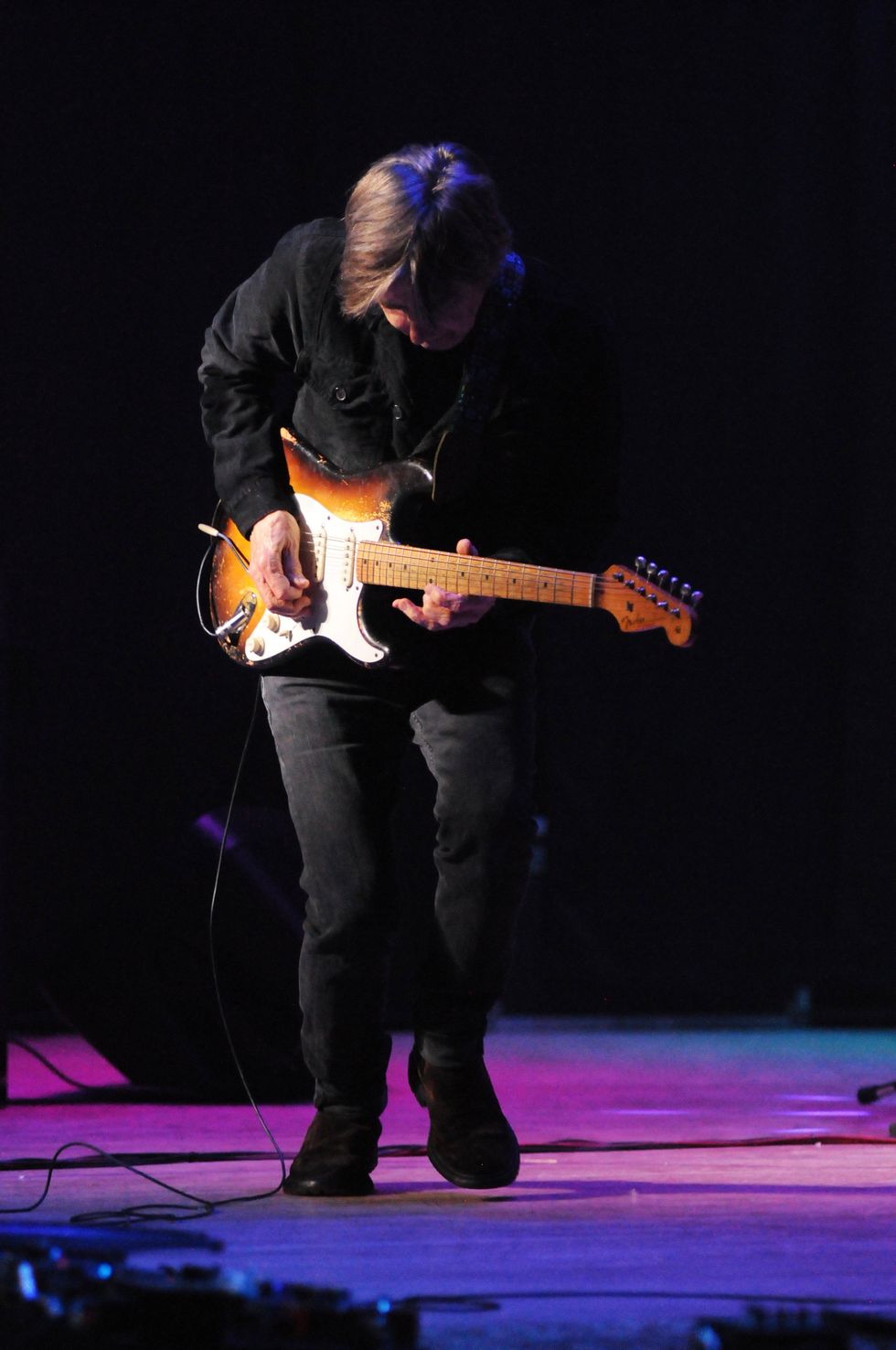
“We can’t be everything to everybody. Then you start appreciating what someone else is doing even more,” says Johnson.
Photo by Jim Summaria
Guitars
- 1958 Fender Stratocaster
- Fender Eric Johnson Signature Stratocaster
- Fender Stratocaster with internal preamp
Amps
- Fender Bandmaster Reverb
- 50-watt Marshall JTM45 Super Tremolo
- 100-watt Marshall JTM45 Super Tremolo
- Two-Rock Classic Reverb Signature
- ’60s stereo Marshall cabinet with Electro-Voice EVM12L speakers
- ’60s Marshall cabinet with vintage 25-watt Celestion Greenback speakers
Effects
- EP-3 Echoplex
- TC Electronic Chorus
- Ibanez Tube Screamer
- Dunlop Fuzz Face
- MXR M-166 Digital Time Delay
- Dunlop Cry Baby Wah
- BK Butler Tube Driver
- Electro-Harmonix Deluxe Memory Man
- Bill Webb Fuzz Pedal
Strings & Picks
- D’Addario Pure Nickel (.010–.046)
- Dunlop Jazz III picks
“Yesterday I was searching for an original print of a photo from [the G3 tour] in ’97,” he says, “where Robert Fripp was opening the shows, unannounced, hidden behind a wall of gear. That was his request—to play as people were filing into the venues. I found this great photo of Robert onstage with his guitar and four-year-old ZZ standing next to him holding a plastic pail—I think it was at Jones Beach. It reminded me of how crazy the notion was at the time of Robert joining up with the tour. But he was so excited about it and wanted to do it. We had fantastic times traveling together and hanging out backstage and getting to know each other on that particular tour, and that set the tone for me—knowing that, not only did I have comrades like Eric and Steve, who felt the same way that I did about collaboration in a live setting, but now there was Robert and Kenny Wayne Shepherd, and the concept of G3 started to really catch fire. It was really heartwarming to know that this sort of gunslinger attitude that existed in the ’80s about guitar players could be challenged. We could create something really inclusive about different styles and generations of players and take it on the road. That came back to me when I saw that photo.”
“I hate the word ‘competition,’” Satriani says elsewhere, surveying G3 history. “But if we didn’t want to challenge each other, we wouldn’t have agreed to do the tour. We get to hear each other’s sets, which is great—we don’t often get to do that when we’re off on our own tours. And then we get to stand next to each other and see what just pops out of nowhere, what each artist decides to throw out as an improvisation. Every night is a once-in-a-lifetime thing. If you can somehow work that into your musical life, you’re really lucky—so I count myself really lucky.”
YouTube It
Watch Satriani, Johnson, and Vai tear through Cream’s classic interpretation of “Crossroads.” In this video, directed by ZZ Satriani, you can get a feel for the history the trio shares with vintage G3 clips and more.
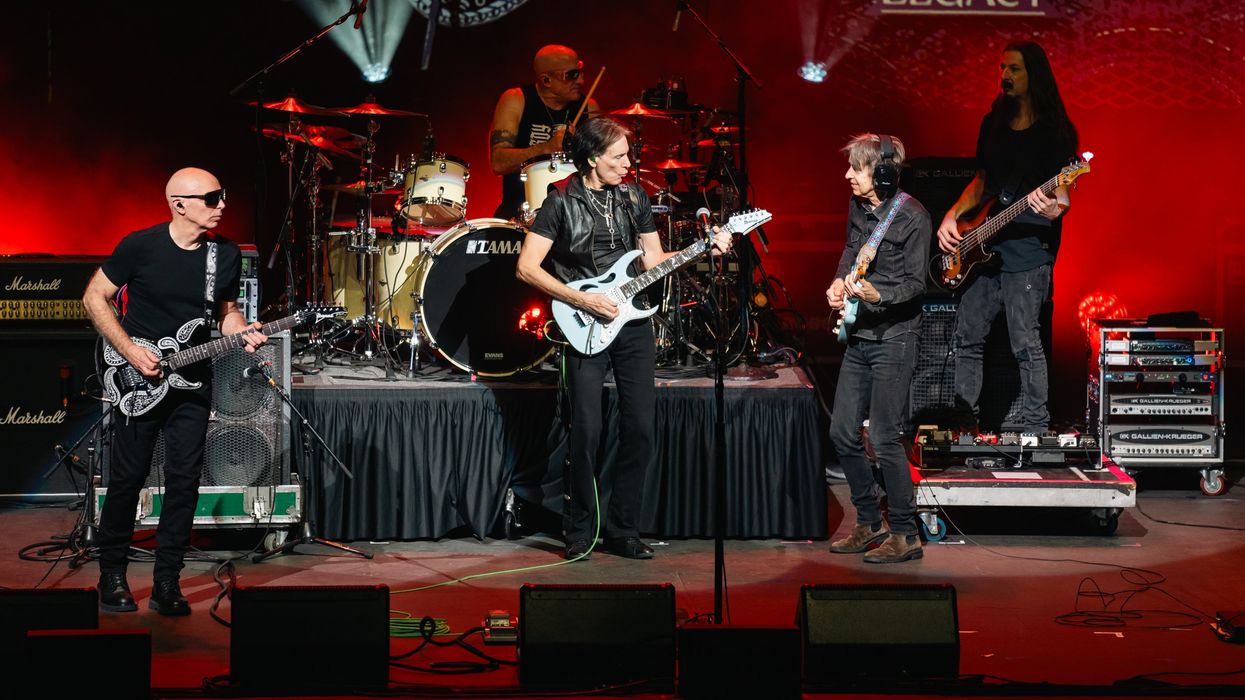
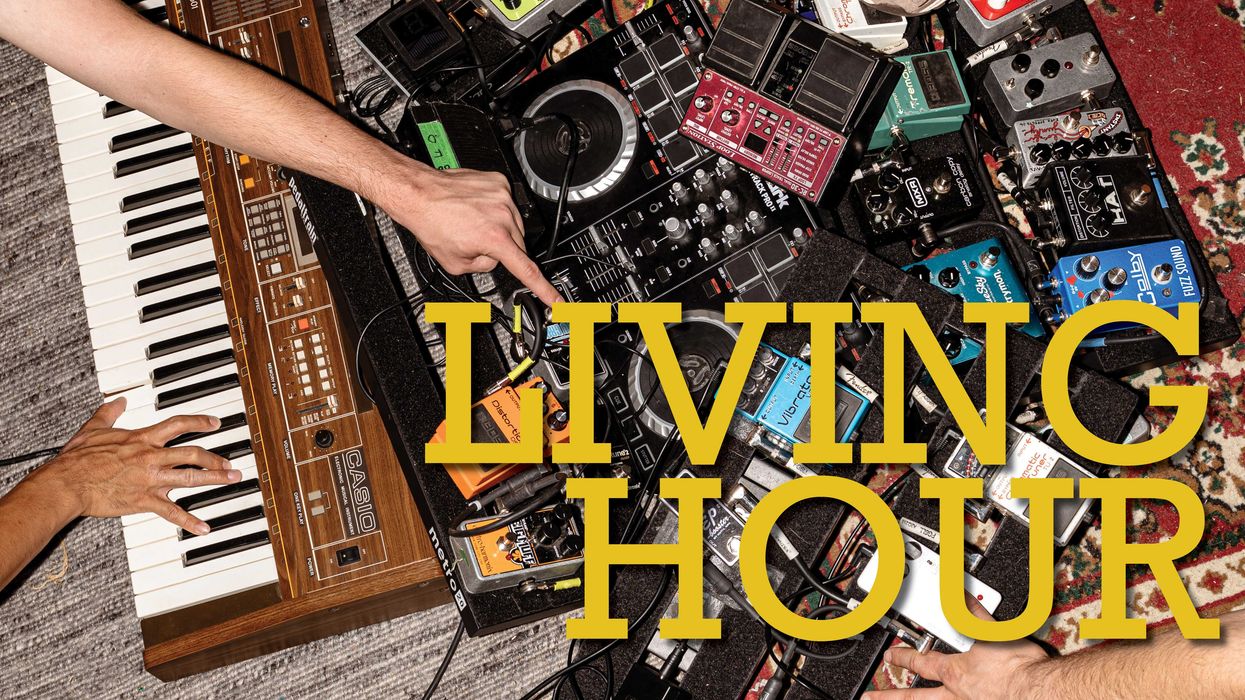
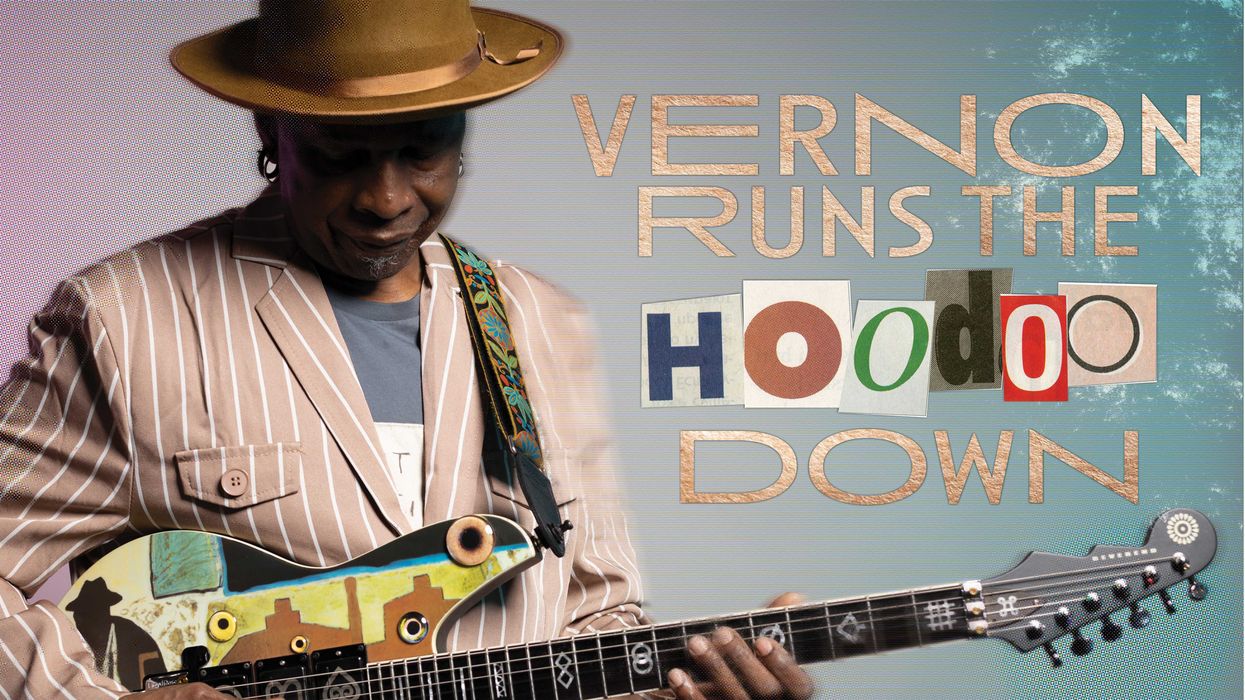
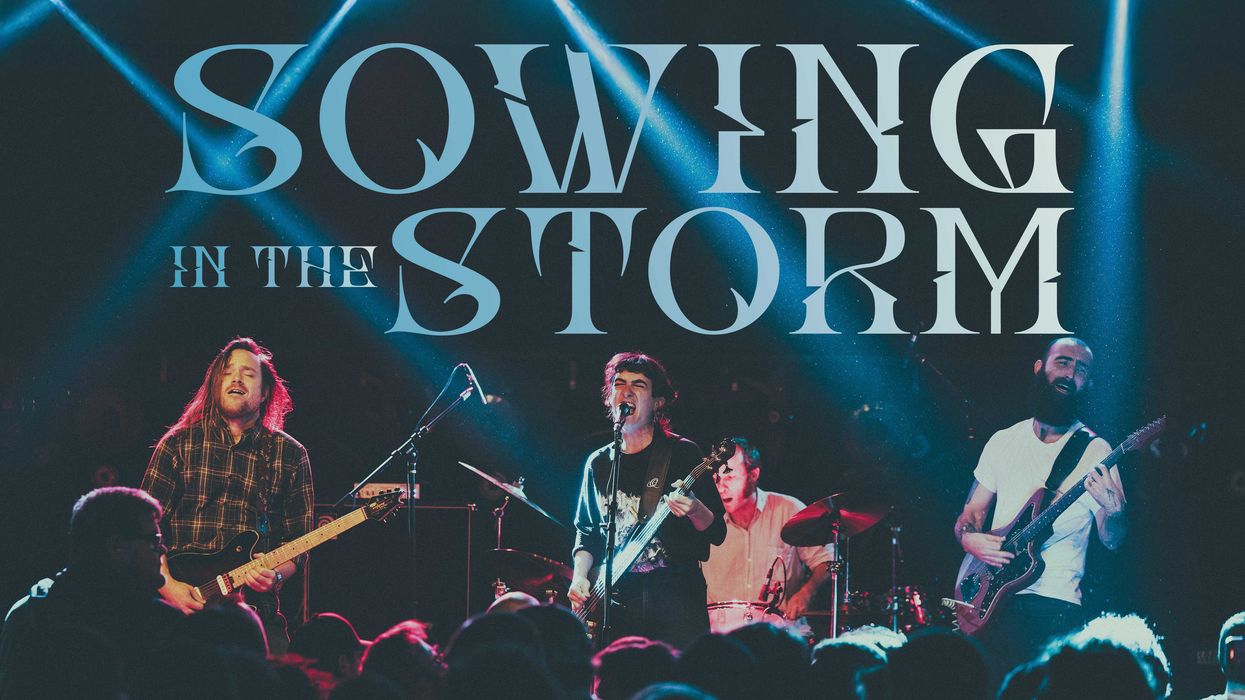

![Devon Eisenbarger [Katy Perry] Rig Rundown](https://www.premierguitar.com/media-library/youtube.jpg?id=61774583&width=1245&height=700&quality=70&coordinates=0%2C0%2C0%2C0)







